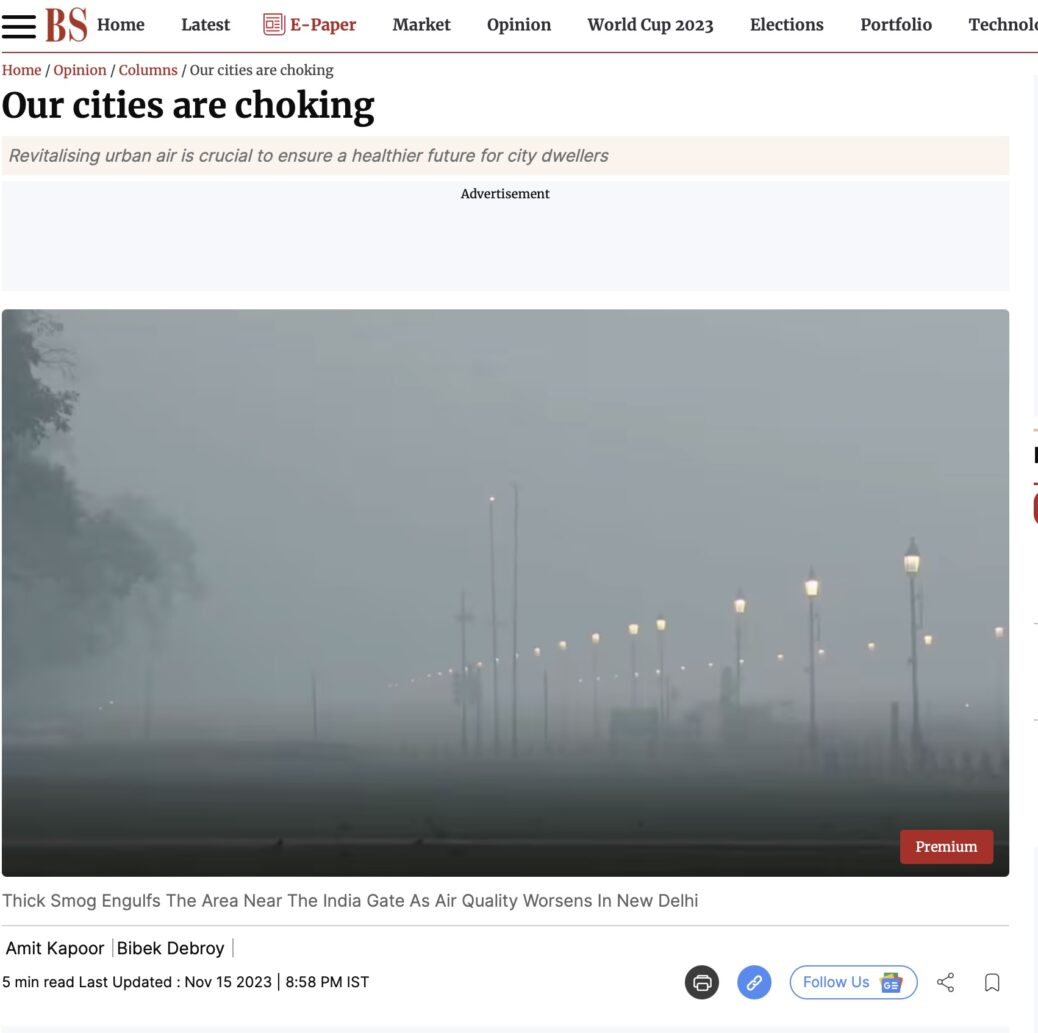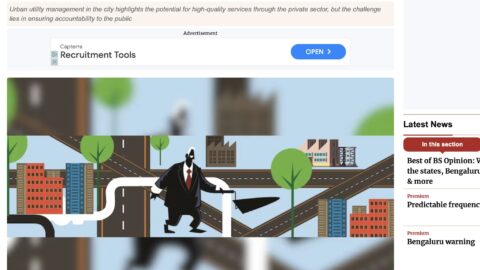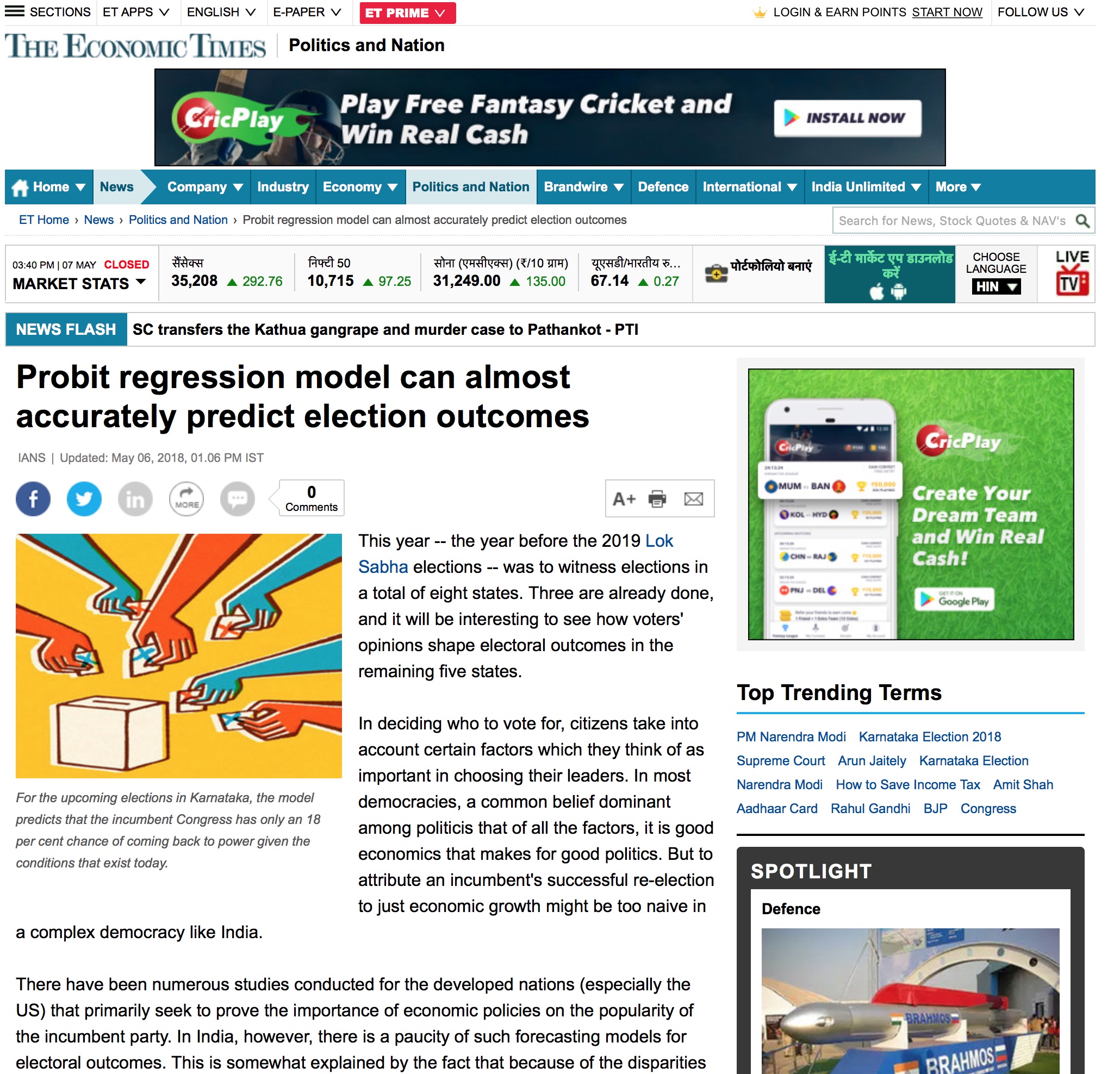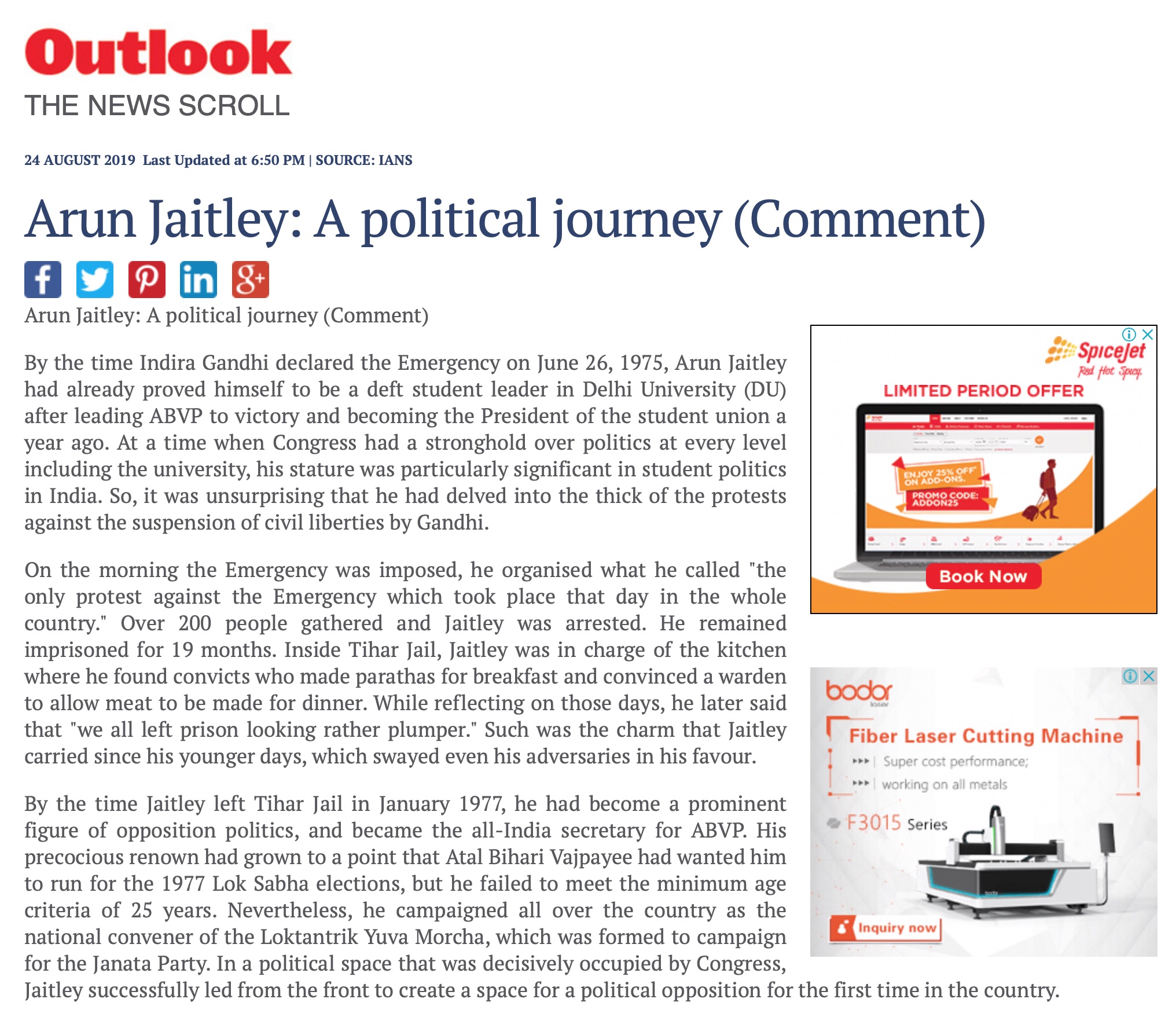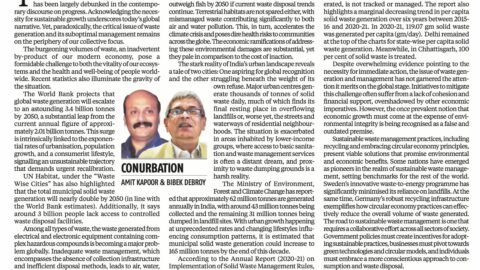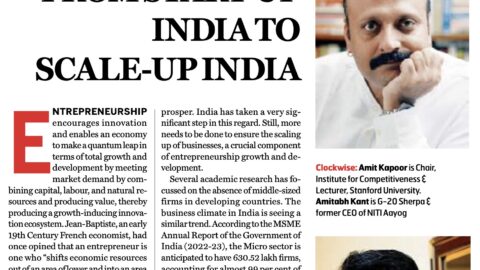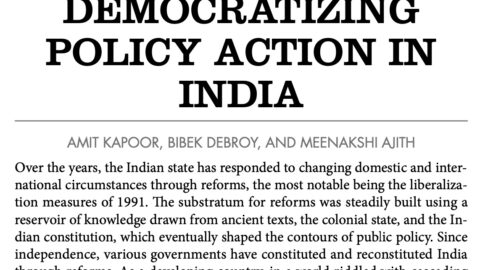by Amit Kapoor & Bibek Debroy
The recent weeks have resurrected sombre memories of the pandemic era when streets were crowded with individuals donning N95 masks while going about their daily routines. However, this time, the looming threat was not metaphorical but literal—an actual cloud of smog enveloped the national capital, akin to a lovelorn lover reuniting with her beloved after an extended separation. In recent years, the winter season in India, particularly in the north and north-western regions, has unfortunately been ushered in by the unwelcome arrival of air pollution. A decade ago, mornings would begin with a refreshing breeze gently caressing our noses. Regrettably, factors such as burgeoning traffic, stubble burning, increased industrial presence on the city outskirts, fireworks, and extensive construction have collectively contributed to elevated air pollution levels in Delhi and its surrounding areas. Reports indicated that the air quality in the National Capital Region (NCR) consistently remained in the “severe” and “severe plus” categories for a week.
A ‘World Air Quality’ Report has suggested that poor air quality can account for up to six million deaths each year as continued exposure to polluted air can lead to severe health conditions, including cancer, lung diseases, heart issues and compromised immunity, especially among children. The increased prevalence of diseases caused by pollution hampers educational opportunities for young children and impedes the ability of low-income individuals to contribute as productive workers. Consequently, this cycle can perpetuate poverty, leading to diminished productivity at both individual and national levels. United Nations Environment Programme (UNEP) in 2021 came out with an update to its 2016 report on ‘Actions on Air Quality’ that provided an overview of how countries could improve air quality. It claimed that 92% of the world’s population is exposed to PM 2.5 concentrations above the World Health Organisation’s (WHO) mandated limit. This exposure is also expected to increase by 50% by 2030. As per the World Bank, regions identified as pollution hotspots, including South and East Asia, the Middle East, and North Africa, exhibit PM 2.5 levels that are eight to nine times higher than those in North America. Notably, China and India collectively contribute to more than half of all deaths attributable to air pollution. This underscores the pressing need for concerted efforts to address the disproportionate impact of pollution on vulnerable populations and regions.
We are also witnessing the largest surge in urban growth, which has also had implications for global health. While with expanding space and technology, global health metrics have improved, air pollution can single-handedly reduce those gains. In many ways, urban growth has also resulted in increasing environmental pollution. Urbanisation is often accompanied by increased industrialisation, vehicular traffic, and energy consumption, leading to elevated levels of air pollution. The primary contributors to urban air pollution include emissions from vehicles, industrial processes, power plants, and the burning of fossil fuels. As urban areas expand, so does the demand for energy and transportation, intensifying the release of pollutants into the atmosphere. Transportation is a significant source of urban air pollution, with the surge in the number of vehicles emitting pollutants such as particulate matter (PM), nitrogen oxides (NOx), and volatile organic compounds (VOCs). Industrial activities in urban centres further exacerbate the issue, releasing pollutants like sulphur dioxide (SO2) and heavy metals into the air. Additionally, the concentration of buildings in urban areas creates heat islands, trapping pollutants and exacerbating the effects of air pollution. The solution, however, is not to do away with urbanisation but to be sustainable in our spatial expansion, ensuring ease of living for the inhabitants.
One of the primary sources of air pollution in urban areas is vehicular emissions. Urban administrations can encourage using sustainable transportation options such as public transit, cycling, and walking. Investing in efficient public transportation infrastructure, creating dedicated cycling lanes, and implementing pedestrian-friendly zones can significantly reduce the reliance on private vehicles and, consequently, lower air pollutant levels. Second, enforcing and regularly updating emission standards for industries and vehicles is crucial. Urban administrations should collaborate with environmental agencies to set and rigorously enforce emission limits for factories, power plants, and vehicles. Regular inspections and penalties for non-compliance can serve as deterrents and contribute to improving air quality. Third, integrating green spaces within urban planning is an effective strategy to combat air pollution. Urban administrations can promote the establishment of parks, green belts, and urban forests. Vegetation is a natural filter, absorbing pollutants and enhancing overall air quality. Additionally, proper urban planning that prioritises mixed land use and minimises congestion can contribute to better air circulation and quality. Most importantly, transitioning to renewable energy sources can significantly reduce the emissions of pollutants such as particulate matter and greenhouse gases. Administrations can incentivise the use of solar, wind, and other clean energy alternatives for residential and industrial purposes. This shift not only addresses air pollution concerns but also promotes sustainable energy practices.
As urbanisation continues to shape the landscape of our societies, addressing the adverse effects on air quality becomes paramount. The correlation between urbanisation and air pollution is evident, but with proactive measures and collaborative efforts, it is possible to create sustainable and healthy urban environments. Promoting sustainable practices, embracing technological innovations, and fostering community engagement can pave the way for a cleaner and healthier future for urban dwellers worldwide.
The article was published with Business Standard on November 15, 2023.

